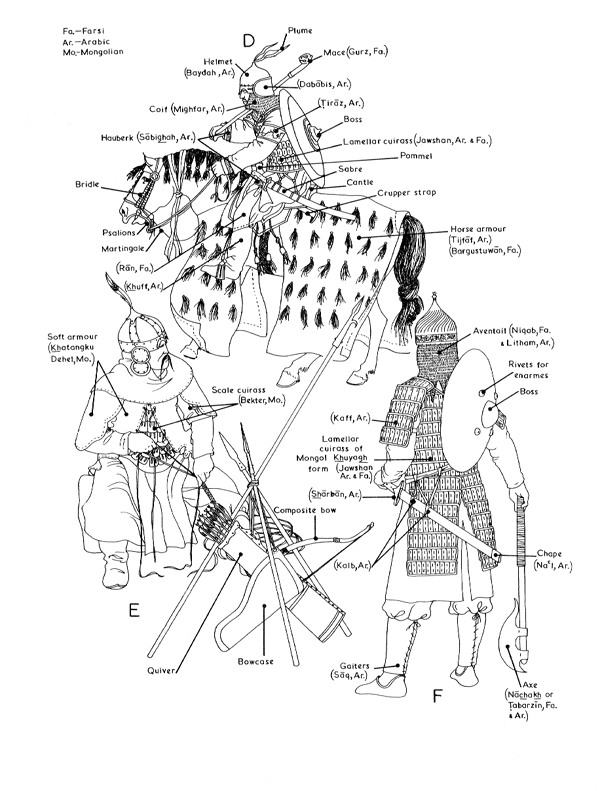

(D=Middle Eastern Muslim ghulam 12 Cent. E=Mongol Warrior 13 Cent. F=Mamluk horseman mid-14 Cent.)
(image from Nicolle, xix)
Because of the differing nature of the warfare used by the Crusaders and the Muslims, the style of armour was different. Comparatively speaking, the European armies were much more heavily armed than the armies of Islam. Due to different strengths and tactics used during their battles, heavy armour would have been a great burden to the speed and efficiency with which the Muslim armies used their mounted archers to cause injury to their enemies.
It is sometimes difficult to find truly representational images of Islamic armour in Western European art. Often in such images Muslims are only distinguished from crusaders by a symbol on the shield. There are, however, some pieces of their attire that can be conceived of as typically Islamic.
Turbans are often wound around presumably conical helmets. Other headgear worn included fluted helmets, low or tall conical helmets without turbans, mail coifs, and brimmed hats or war hats (Nicolle, 327 and 806).
Muslims also used mail hauberks as their primary defense in hand to hand combat, and for their heavy cavalry. It seems, however, that the bulk of the Muslim army consisted of light cavalry which may have worn only a padded overcoat instead of the mail hauberk (Nicolle xix, Hurley 141).
Large riding boots or overshoes were worn by the Islamic cavalry. These were loose enough to fit a small weapon inside. They were often worn in conjunction with the Saq, the Islamic version of the chausses. Cavalry wore additional leggings above the boot known as Ran, a piece of armour comparable to the European cuisses. These were tied to the waist-belt and could be made of iron as well as other materials (Nicolle, 618-619).
Shields were predominantly round in shape with a boss in the middle.
The horses of the Islamic armies wore a quilted covering called a Tijfaf or Bargustuwan for protection (Nicolle, 587 and 624).